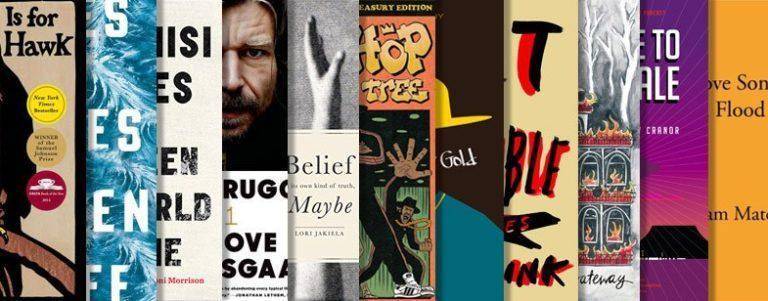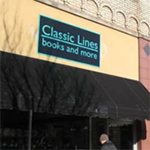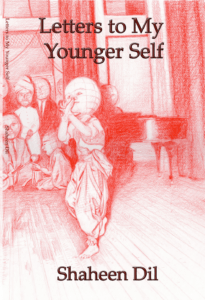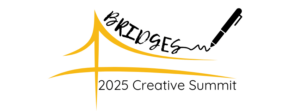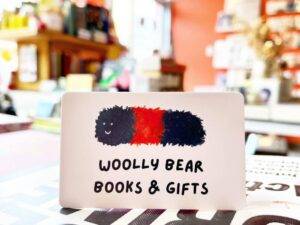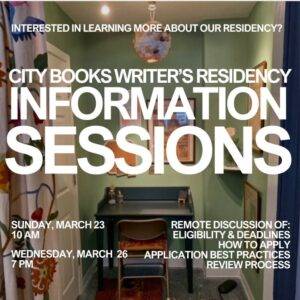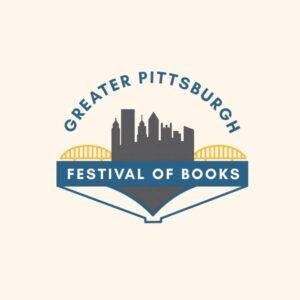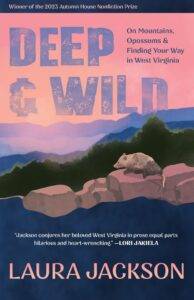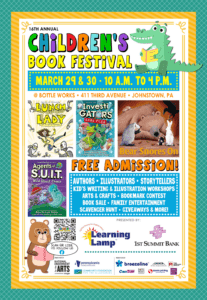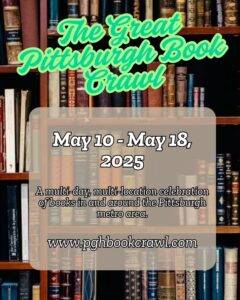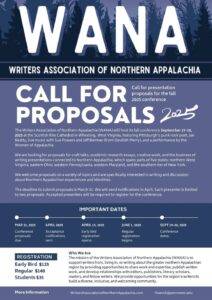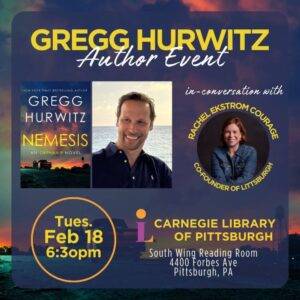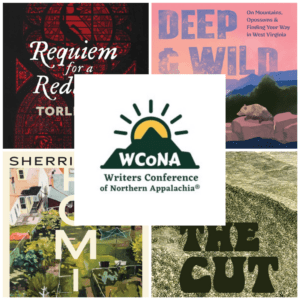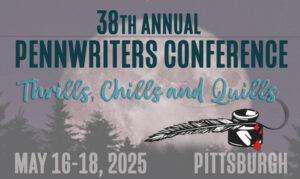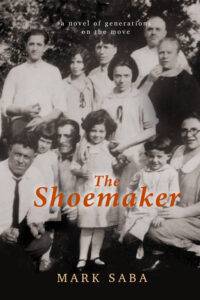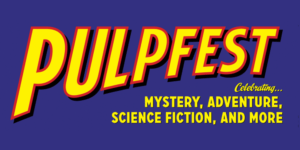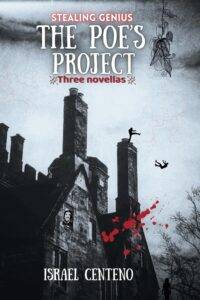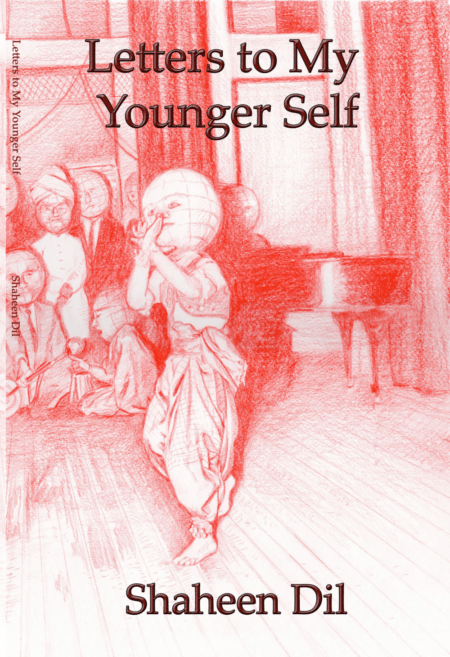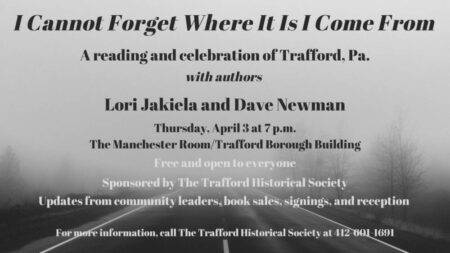2015 has been a big year for Littsburgh — we didn’t exist 6 months ago! — and a big year for books in general. Looking back on our “year in reading,” we wanted to highlight the titles that were most memorable for us as readers — the books that got us talking, the books that we loved… and we asked Pittsburgh’s indie booksellers for their picks as well!
Read Part One: Rachel, Nick, & Katie… If you’re shopping for a book lover, we’ve been posting chapters from the books of local and touring authors over the past few months, so please check those out for some more ideas. (And if you’re really stuck, you can’t go wrong with a copy of this, by Pittsburgh’s Matthew Buchholz.)
Please join us in supporting our local booksellers this holiday season, and let us know your favorites of 2015 on Facebook and Twitter!
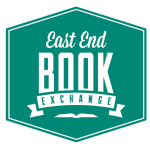 Lesley Rains, East End Book Exchange
Lesley Rains, East End Book Exchange
In year full of books by women about flawed and fierce women, the two standouts are Fates and Furies by Lauren Groff and H is for Hawk by Helen Macdonald.
Both started from seemingly simple premises. Fates and Furies centers around a 40 year marriage, with the first half the book presenting the husband’s perspective, while the second half switches to tell the wife’s story. In H is for Hawk, Macdonald recounts her attempt to train a goshawk as a way to cope with her grief from her father’s death. Through intricate plotting and thoughtful prose, Groff and Macdonald explore questions about love and power, tragedy and resilience, nature and nurture.
I devoured both books in a matter of days. (ICYMI: President Obama also picked Fates and Furies as his favorite book of the year.)
[bctt tweet=”→@Littsburgh’s Year in Reading: @EastEndBooksPgh’s Lesley Rains recommends…”]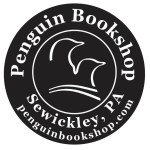 Susan Hans O’Connor, Penguin Bookshop
Susan Hans O’Connor, Penguin Bookshop
Fates and Furies by Lauren Groff is my favorite novel of 2015. Gorgeous writing, page-turning plot, psychological twists and turns, Updike-ian domestic drama…my favorite kind of book! Incites lots of interesting conversation about the nature of relationships and how well we can ever really know another person — even if that person is our spouse! Love, love, love Lauren Groff.
Between the World and Me by Ta Nehisi Coates is a challenging book to read, but an important one, even if it asks more questions than it answers and doesn’t provide the hope that most of us are looking for. Coates is a powerful voice in an on-going conversation about race, a conversation we should all take part in, no matter how difficult that may be.
[bctt tweet=”→@Littsburgh’s Year in Reading: @PenguinBookshop’s @shansoconnor recommends…”]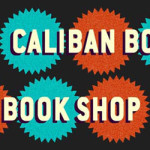 Kristofer Collins, Caliban Book Shop
Kristofer Collins, Caliban Book Shop
It’s a tough task to whittle down all the great things I read this year to a manageable list, so I’ll resort to that old faithful The Top 5 (in no particular order).
1. Belief Is Its Own Kind of Truth, Maybe By Lori Jakiela — Honestly, what is there left to say about the all-around awesomeness of Lori Jakiela? Belief… might be her most personal work yet, which is a weird thing to say about a memoirist, but here she digs deeper, gets bloodier (in the literary sense of course), and achieves a kind hard-earned grace as she navigates the emotional minefield of searching for and finding her birth mother.
2. Love Songs from Flood City by Adam Matcho — I spent more time immersed in Adam Matcho’s poems than I did with the work of any other writer. Yes, this is necessarily because my own Low Ghost Press published this latest collection; however, I had nothing to do with the creation and editing of the book. My partner is publishing, Scott Silsbe, handled the editorial duties on this one… shepherding Adam’s tales from the newspaper obituary desk and of lives lived below the poverty line. It was a genuine pleasure to sit back and watch Adam and Scott build the finished manuscript into one of my very favorite books this year (even if we hadn’t published it at Low Ghost).
3. Hip Hop Family Tree, Vol. 3: 1983-1984 by Ed Piskor — Piskor’s third volume in his comics history of Hip Hop is another winner. Done with a nod to the Mighty Marvel Comics style and with Piskor’s own light-handed erudition this series is going to be a cultural benchmark far into the future.
4. Where You Are by Jason Irwin — Jason Irwin is easily in my top five poets living in Pittsburgh list. This slim volume from NightBallet Press (which has taken a serious interest in publishing our local poesyslingers) is another sobering dose of blue collar poems suffused with a deep, abiding soulfulness. I am routinely in awe of Irwin’s work. More people need to know this guy!
5. My Struggle, Vol. 1 by Karl Ove Knausgaard — Knausgaard’s dense frosty prose may not seem like the ideal beach reading, but that’s where I was finally able to devote the time and attention necessary to appreciate the author’s achievement. Sure, it’s a real navel-gazer (and at six volumes that’s one deep inny), but Knausgaard is interest in his own life is merely as a touchstone to deeper meditations on life, death, and family. The prose is perfectly matched to an oceanside read, actually, as it rises and falls in rhythmic tides revealing further depths the further down you go.
Honorable mention has to go out to these poetry collections: How To Be an American by Ally Malinenko, Stationed Near the Gateway by Margaret Bashaar, Poem Factory by Dave Newman, The Gaffer by Celeste Gainey, and Olympic Butter Gold by Jonathan Moody. These collections have all stayed with me long after the last page. I continue to return to them, working the poems over in my mind again and again. Just wonderful work all around!
[bctt tweet=”→@Littsburgh’s Year in Reading: @CalibanBooks’ Kristofer Collins recommends…”]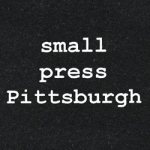 Karen Lillis, Small Press Pittsburgh
Karen Lillis, Small Press Pittsburgh
The nonfiction book Root Shock by Mindy Fullilove was the book that blew my mind this year. I loved it both because of the powerful story it tells and the masterful way the author weaves in different genres and approaches: psychology, urban studies, oral history, American history, African American history, urban design.
It tackles the story of so-called “urban renewal” in American cities (nicknamed “Negro Removal” by James Baldwin). This was a federal incentive program that subsidized city upheaval in the mid-20th Century, but Dr. Fullilove, a research psychologist, writes about the psychological effects decades later on the African American community, which was disproportionately displaced by the razing of hundreds of thousands of city-center housing units and the destruction of 1600 black neighborhoods across the US. Importantly, she points out that the tight-knit communities lost in the razing were never really replaced. So many African American businesses and commercial districts were destroyed, the author even attributes the destruction of jazz to this federal program.
I mention this book here because there is a significant Pittsburgh component–our city is one of the few locales to which the author gives a close up. She talks about the pre-urban renewal Hill District as a magical, lively, creative African American community. “I believe that, pound for pound, the Hill District was the most generative black community in the United States,” she says.
Sadly, since this book seems absolutely relevant to conversations in the Black Lives Matter movement (as well as affordable housing and urban design conversations we’re having in Pittsburgh right now), this 2004 book appears to be out of print. Find it at your library.
[bctt tweet=”→@Littsburgh’s Year in Reading: @BookstoreMemoir recommends…”]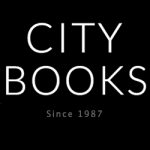 Arlan Hess, City Books
Arlan Hess, City Books
My favorite book this year was H is for Hawk by Helen MacDonald. It’s a memoir by a woman who deals with the loss of her father by adopting and training a wild goshawk. Crafted of the most poetic nonfiction prose I have ever read, I was drawn to MacDonald’s insight and honesty when writing about her personal struggles. However, the book is not about grief, per se. It is about perseverance, courage, and growth in difficult times. On every page, the book embodies the phrase, “we read to know we’re not alone.” Its themes are timeless and universally applicable.
I’ve been recommending it all year to everyone who asks.
[bctt tweet=”→@Littsburgh’s Year in Reading: @citybookspgh recommends…”]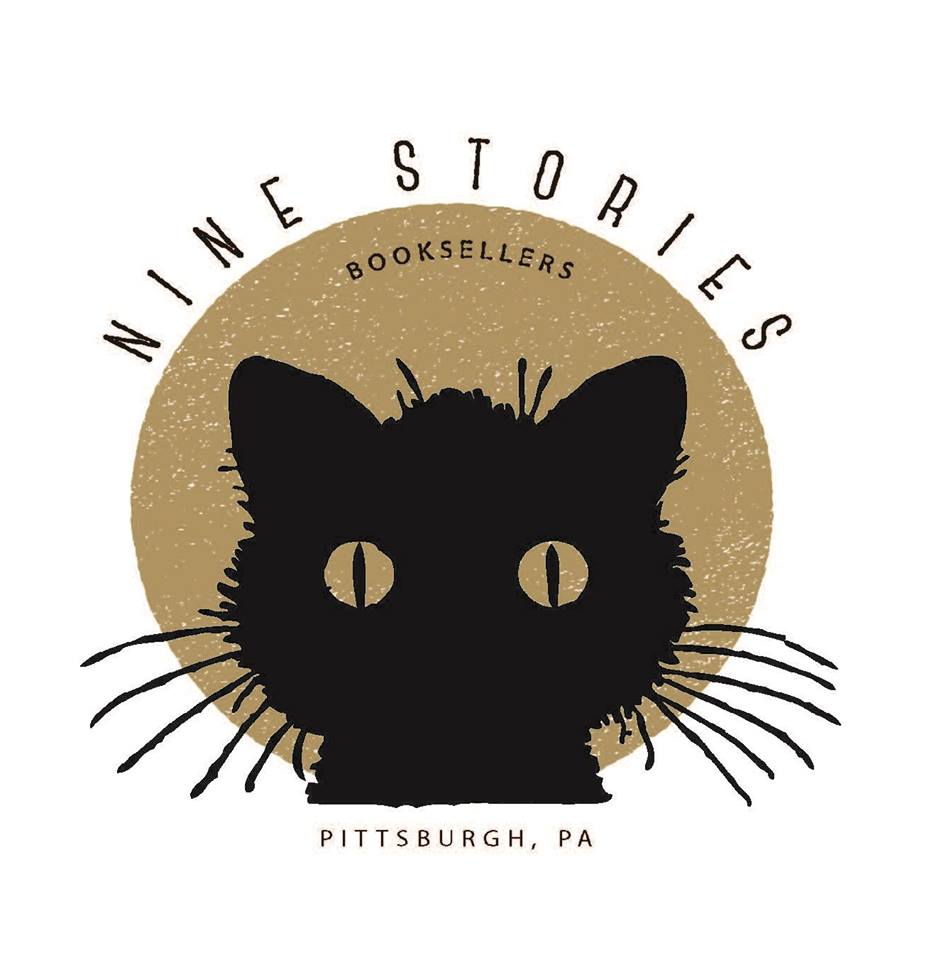 John Shortino & Allison Mosher, Nine Stories Pittsburgh
John Shortino & Allison Mosher, Nine Stories Pittsburgh
We started the year off reading War and Peace as part of the “Russian Winter Book Club,” which wrapped up in March, then spent the spring catching up on some big books from 2014, like Emily St. John Mandel’s Station Eleven and Jeff Vandermeer’s Area X trilogy.
Two of our favorite books published in 2015 were Kelly Link’s Get in Trouble and the Welcome to Night Vale novel, which probably gives a good sense of the type of books we love: slightly creepy and fantastical, but with sudden emotional gut-punches.
[bctt tweet=”→@Littsburgh’s Year in Reading: @ninestoriespgh recommends…”]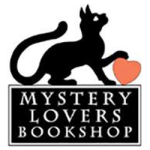 Natalie Sacco, Mystery Lovers Bookshop
Natalie Sacco, Mystery Lovers Bookshop
The Red Notebook has been a staff and customer favorite since it came out in April of 2015. It is a quaint and whimsical story of a bookseller who comes across an abandoned handbag on a Parisian street. There’s nothing in the bag to indicate who it belongs to, although there’s all sorts of other things in it — including a red notebook. So begins the bookseller’s adventure to find the owner. The Red Notebook along with The President’s Hat are two fabulous books by Antoine Laurain, and they both revolve around everyday objects that change the protagonist’s life.”
[bctt tweet=”→@Littsburgh’s Year in Reading: @MysteryLovers1’s @NatalieSacco recommends…”]The Gap of Time by Jeanette Winterson is great. Classic Winterson. If you like the magical realism of Paulo Coelho you’ll really like this book. The story is a retelling of Shakespeare’s The Winter’s Tale. Winterson points out that there are only three kinds of ending in Shakespeare (or anywhere for that matter); tragedy, revenge, or forgiveness. The Gap in Time is a story of forgiveness.
Here’s my favorite quote from the book:
“And the world goes on regardless of joy or despair or one woman’s fortune or one man’s loss. And we can’t know the lives of others. And we can’t know our own lives beyond the details we can manage. And the things that change us forever happen without us knowing they would happen. And the moment that looks like the rest is the one where hearts are broken or healed. And time that runs so steady and sure runs wild outside of the clocks. It takes so little time to change a lifetime and it takes a lifetime to understand the change.”
Read this one for sure.
The best advantage to owning a bookstore is that I get to read all the best stuff, like Finale: A Novel of the Reagan Years by Thomas Mallon. The big disadvantage is that I don’t have time to read like I used to. As I result I’ve gotten very particular about how I spend my reading time. Reading Finale was time very well spent. This is one of the best political novels in years. If you couldn’t wait for the Reagan years to end you’ll love this book. This book will land on your all time favorite historical/political fiction.
Think Echo House by Ward Just or Seven Days in May by Fletcher Knebel.
Bar none, The Gods of Tango by Carolina De Robertis is absolutely the BEST book of 2015. You can feel the surge and the sway of the tango in De Robertis’ prose. It’s literate, tight, emotional, and soaring. Exactly what a tango ought to be. You won’t read anything like it or read anything nearly this good all year.
I had to find out what all the fuss was about and read Visions and Revisions: Coming of Age in the Age of AIDS by Dale Peck. It has landed a spot on my top 5 list for best memoirs. It’s an intelligent, literate, thoughtful, no holds barred memoir from a man who fought in (was caught up in?) the AIDS war at ACT-UP when he was in his early 20s. Twenty plus years later he’s still angry (who isn’t).
The style can be bombastic with details that will (should?) shock you but that is a very good thing. It’s intended is to make you think about the death sentence that was AIDS. As much as anything though this book is about the death of gay culture as the GLBT community abandons its culture for assimilation into the mainstream. This is something I’ve thought about for years and Peck addresses it head on in prose style that reminds me of reading Joan Didion. In fact I was reminded of Didion at numerous points throughout this book.
The best Young Adult books of the year: Vango: Between the Earth and Sky and A Prince Without a Kingdom by Timothée de Fombelle.
In a world between wars, a young man on the cusp of taking priestly vows is suddenly made a fugitive. Fleeing the accusations of police who blame him for a murder, as well as more sinister forces with darker intentions, Vango attempts to trace the secrets of his shrouded past and prove his innocence before all is lost. As he crisscrosses the continent via train, boat, and even the Graf Zeppelin airship, his adventures take him from Parisian rooftops to Mediterranean islands to Scottish forests. A mysterious, unforgettable, and romantic protagonist, Vango tells a thrilling story sure to captivate lovers of daring escapades and subversive heroes.
[bctt tweet=”→@Littsburgh’s Year in Reading: Classic Lines recommends…”]


